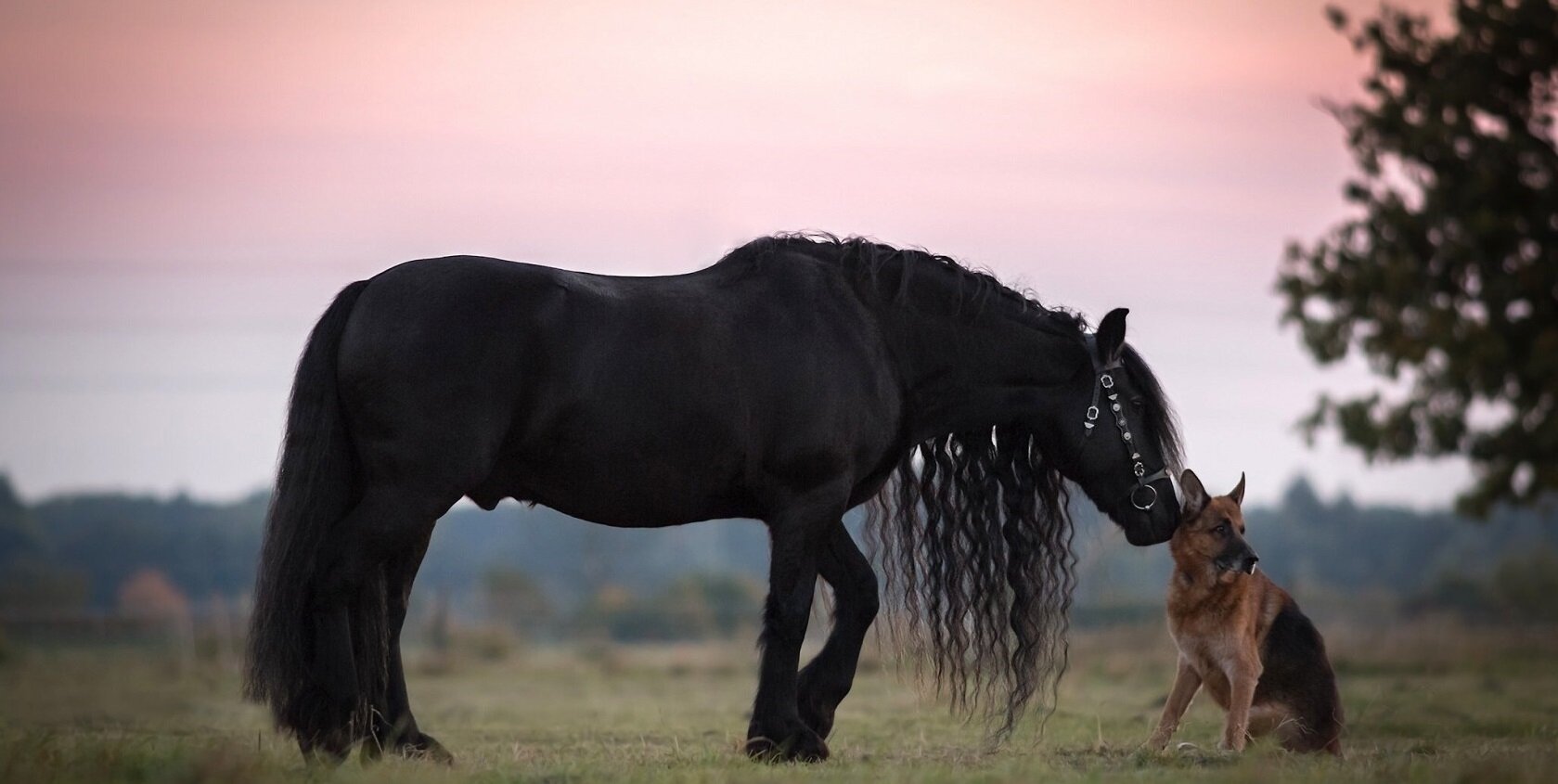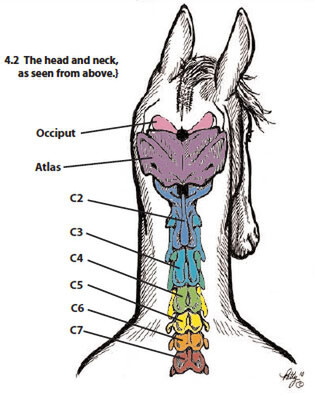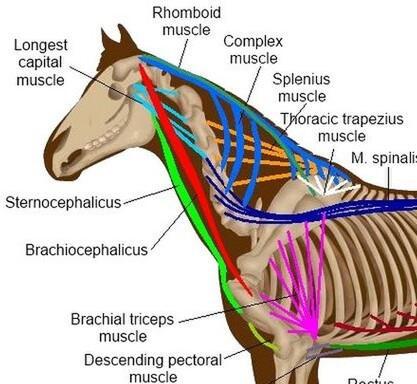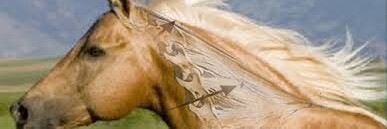Head and Neck Problems:
General Symptoms
• Difficulty picking up, maintaining, or changing leads
• Difficulty with poll flexion
• Uncomfortable with haltering and/or bridling
• Head-shy
• Ear-shy
• Tips nose to the outside when doing circle work
• Bracing on or evading the bit, especially one side only
• Spooky
• Standoffish, non-affectionate
• Facial expression/ head tilt or lowering of head to one side
that often indicates: “I have a headache. Don’t bother me.”
• Inability to do “long and low” work comfortably
• Difficulty with collection or impulsion
• Stiff neck or body
• Inability to bend neck right or left
• Unwilling to open mouth for bit
• Difficulty chewing on one or both sides
PHYSICAL SYMPTOMS: CURRENT OR PRIOR
• Dental problems—especially asymmetrical tooth wear
Unlike our teeth, horses teeth constantly grow and are shaped and molded by the jaw glide and mouth movement as they chew their food and graze. If there mouth function is not level, balanced, smooth and properly gliding as they chew problems commence. Problems can also come from eating dense forage with sticks and thorns in it causing soft tissue injuries inside the mouth cavity. As teeth get sharp, broken, uneven and waves are created the horse begins compensating and muscles get tight and sore, headaches occur and the joints begin to overwork in uncomfortable ways which causes inflammation.
The mouth issues are then carried into the whole body creating tension, bracing and compensating muscle issues. Such as: Tight Poll,TMJ issues, Ewe neck.
FUNCTION: The atlas, also called the poll or the first cervical vertebra (C1), is one of the two anchor points for the dura mater of the spinal cord; the other anchor point is the sacrum. The atlas is responsible for 90 percent of the head’s rotational movement. It is
also protection for the brainstem as it travels from the skull to the remainder of the spinal column.
NORMAL RANGE OF MOTION: The atlas can move quite a bit in order to rotate the horse’s nose right or left. It easily moves 1 to 2 inches as it is pulled down toward the ground on each side, and also moves from front to back (toward the tail) approximately 1/4 inch.
Dental problems, sharp tooth edges, or tooth abscesses: Horses should have regular check-up with a qualified equine dentist / dental vet
Mouth ulcerations
Bit discomfort
Guttural pouch infection (can create a systematic infection through out body)
Sinus infection
I also see some head and neck issues coming from fear-based training. This is training that teaches horses to react or move from fear rather than thinking and processing their education.
When horses are afraid or reactive they get tense in their head and neck and typically go around head high with their eyes wide open. Then of course you would "fix" that with tie down equipment, making it even worse. Over time this pattern becomes damaging and the head and neck become chronically sore. The horse stays sour and wants nothing to do with humans. They may tolerate people but would just as soon not deal with us if they don't have to.
Indication of probable tension use services such as Animal Muscle Release Therapy after being seen by dentist. I have found AMRT Therapy (Myofascial release)/ Acupuncture do wonders with poll and neck issues.



